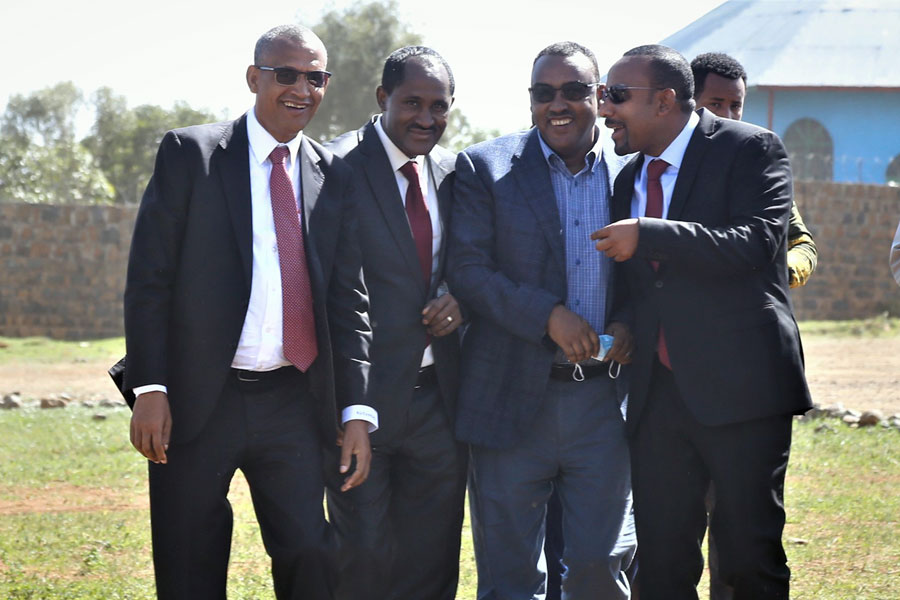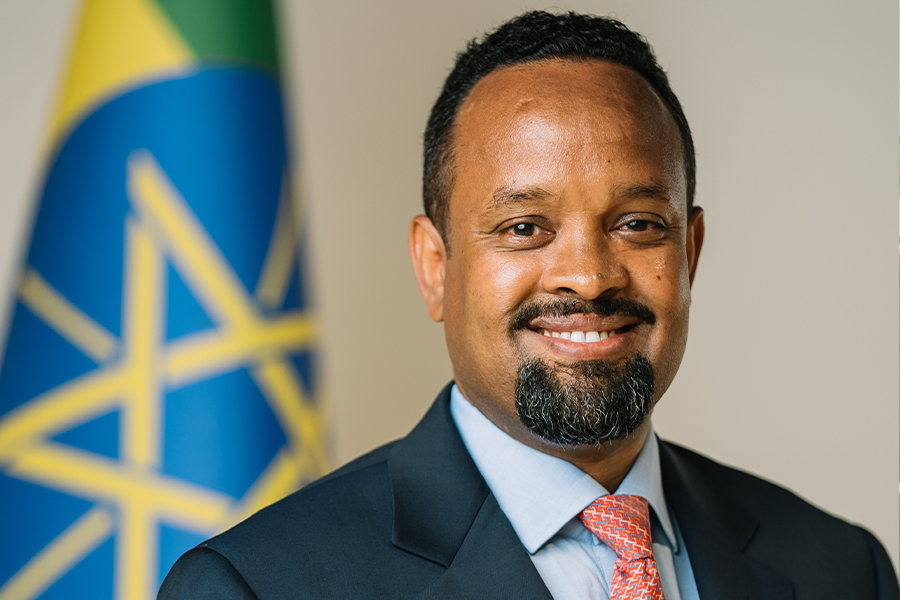
My Opinion | Aug 26,2023
Jan 18 , 2019.
Like many instabilities around the world, the worrying state of a country rarely gets enough attention before it begins to affect the political and economic hub of a nation, usually the capital.
A good illustration is the fuel shortage that hit Addis Abeba last week, forcing motorists to sit in long lines in a scene not witnessed for a quarter century. Evocative of a similar situation last year in March, just before the unprecedented level of unrest since 2015 climaxed in a blockade of fuel to the city, the worrying breakdown of law and order across the country is more immediately affecting those not directly responsible for it.
At the very least, it was adding to the fuel worries of a city that has come to run out of it more frequently.
An even better example was the violence in Burayu and its surrounding towns that led to the displacement of residents into Addis Abeba, painting a stark picture of the humanitarian toll that has become characteristic of the nation. It came after inter-communal conflict along the administrative demarcation of the SNNPR and Oromia regional states that led to the displacement of over a million people.
But it was an incident, which directly affected the capital, where most of the academia, diplomatic community, the media establishment and middle-income citizenry are congregated, that produced the greater outrage.
The international attention the humanitarian crisis is getting is as well disheartening given its magnitude, mostly owing to a range of developments that have followed the assumption of office by Prime Minister Abiy Ahmed (PhD) in April last year. The series of political reforms that have been undertaken; the appointment of the most number of women to ministerial cabinet positions in the nation’s history; and, the rapprochement with Ethiopia’s almost two-decade-long adversary, Eritrea, have helped the country effect a more positive image in the eyes of the international community.
The coverage over the disheartening level of humanitarian crisis the nation was affected with left much to be desired though.
There are currently 2.4 million internally displaced persons in Ethiopia, according to the UN Office for the Coordination of Humanitarian Affairs’ (UNOCHA) recent report that came out a week ago. It is higher than war-torn Yemen and constitutes about 2.4pc of Ethiopia’s entire population. Ironically, the country’s leaders pretend as if this is not to be noticed, wasting much of their time in internal political squabbling.
Abiy’s administration does not refute the numbers, but neither is it seeing it for the socio-economic devastation it is. The initial reports of every such crisis are reacted to with brief media attention and shock, condemnation and a call for resolve by officials and opposition politicians. It is followed by a long-term and deafening silence on the fates and conditions of the displaced.
The administration does deserve credit for the efforts it is taking to address the ultimate cause of the displacements, the political problem. It includes the lack of a consensus on the very architecture of the system and the weakness of institutions in the country.
The ongoing discussion between political parties and reforms to make the judiciary and democratic institutions autonomous and trustworthy are welcome. If the administration can address the breakdown of the lower structure of government and retain its monopoly of violence, such reforms can help curb the cause of the displacements.
The lack of these will only exacerbate the problem.
But the effect of the political crisis, the current humanitarian problem, not unlike the cause of it, requires a response that is long-term if social and economic consequences that will last for generations are to be avoided. Neither the Ethiopian economy nor the body politic is equipped to deal with such a large and concentrated movement of people in such a short period. It is all the more crucial since displacements do not show signs of waning.
Indeed, 400,000 internally displaced persons from the towns along the administrative demarcation of the Oromia and Somali regional states were recently returned, according to the Oromia Disaster & Risk Management Commission. But the return of people to what is considered their native regions or where they are believed to have parental legacy should have been the exception. It seems to have become the rule, however, with persisting displacements and an inability to address the humanitarian crisis.
An average of 320 people, some of which come from other regions, are displaced just in the Amhara Regional State every week.
Worse still, reaching people in need of humanitarian crisis as a result of security and transportation problems is proving to be a major problem, as was the case with the Benishangul-Gumuz Regional State last year. The United States Agency for International Development (USAID) has since suspended food aid for displaced persons in the southern regional state due to what it said was violence, even after acknowledging that doing as such would affect 140,000 people.
The fact that an adequate response to the humanitarian crisis is being hampered by continuing unrest and that hundreds of thousands of people are not getting the help they desperately require needs a political response. There will need to be the political will to concede that the problem has in some cases gotten out of the hands of the Administration and that the nation is not well. It is an issue that cannot be swept under the rug for it requires a broad international and domestic input to address.
The Disaster Risk Management Policy of the nation, drawn in 2013, should also be upgraded to articulate and give focus to human-made disasters, which require a much different response than the vagaries of nature. This is especially true for the sustainable relocation of displaced persons, which should have a much broader scope. It includes the subsequent long-term safety, security and access to employment of relocated persons and a mechanism by which property is returned or compensated.
Without successful reintegration into communities and a policy that provides ground for the institutional capacity and framework to allow follow up, the trauma caused by human-made disasters cannot be erased by the mere voluntary relocation of displaced persons.
PUBLISHED ON
Jan 18,2019 [ VOL
19 , NO
977]

My Opinion | Aug 26,2023

Commentaries | Feb 18,2023

Radar | Sep 01,2024

Fortune News | Jun 12,2021

Radar | Jun 24,2023

Viewpoints | Aug 01,2020

My Opinion | Oct 21,2023

Radar | Oct 14,2023

Commentaries | Apr 26,2019

Commentaries | Feb 20,2021

Photo Gallery | 169853 Views | May 06,2019

Photo Gallery | 160099 Views | Apr 26,2019

Photo Gallery | 149686 Views | Oct 06,2021

My Opinion | 136214 Views | Aug 14,2021

Dec 22 , 2024 . By TIZITA SHEWAFERAW
Charged with transforming colossal state-owned enterprises into modern and competitiv...

Aug 18 , 2024 . By AKSAH ITALO
Although predictable Yonas Zerihun's job in the ride-hailing service is not immune to...

Jul 28 , 2024 . By TIZITA SHEWAFERAW
Unhabitual, perhaps too many, Samuel Gebreyohannes, 38, used to occasionally enjoy a couple of beers at breakfast. However, he recently swit...

Jul 13 , 2024 . By AKSAH ITALO
Investors who rely on tractors, trucks, and field vehicles for commuting, transporting commodities, and f...

Oct 5 , 2025 . By NAHOM AYELE
In Meqelle, a name long associated with industrial grit and regional pride is undergo...

Oct 5 , 2025 . By BEZAWIT HULUAGER
The federal government is set to roll out a new "motor vehicle circulation tax" in th...

Oct 5 , 2025 . By NAHOM AYELE
The Bank of Abyssinia is wrestling with the loss of a prime plot of land once leased...

Oct 5 , 2025 . By BEZAWIT HULUAGER
The Customs Commission has introduced new tariffs on a wide range of imported goods i...